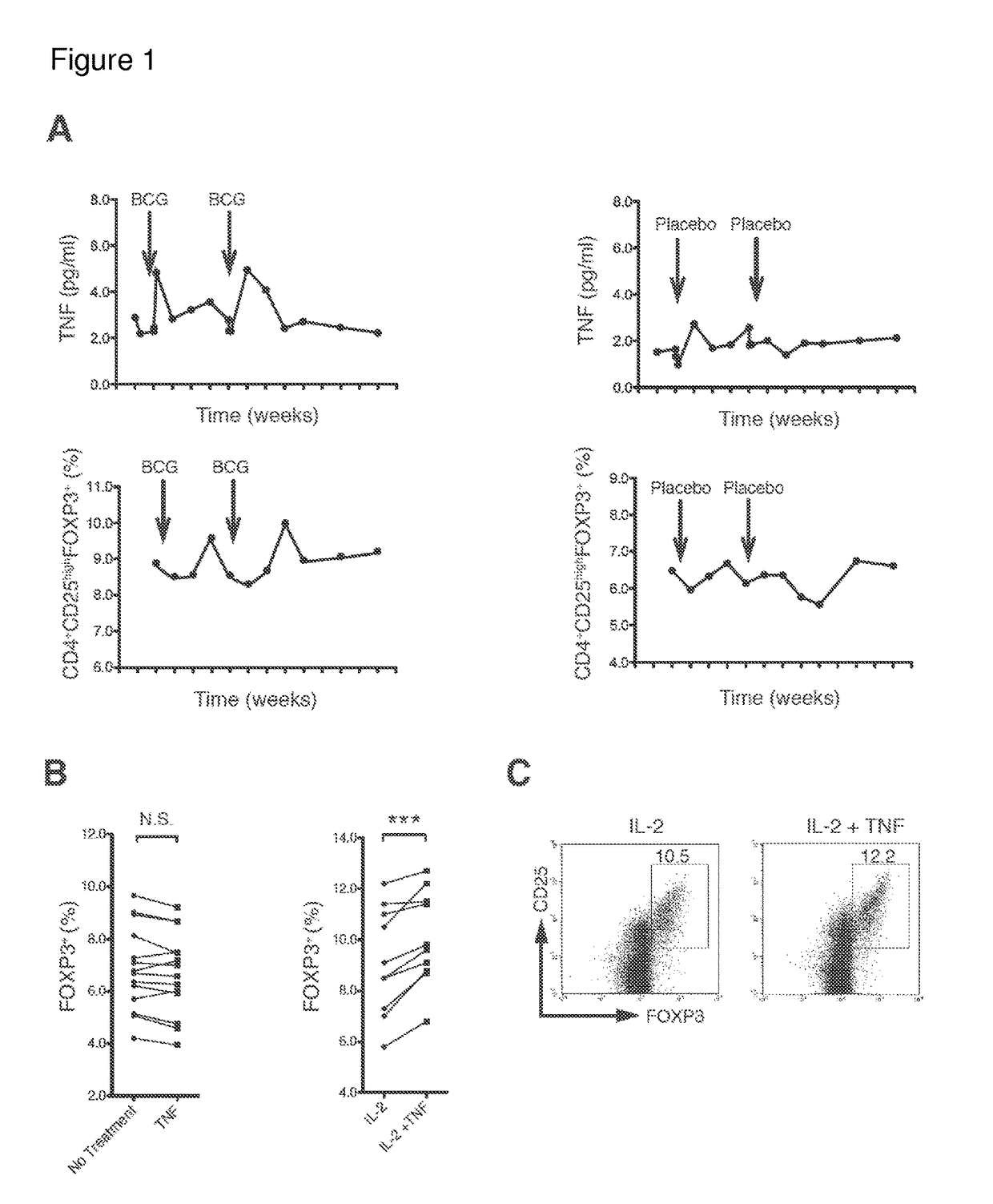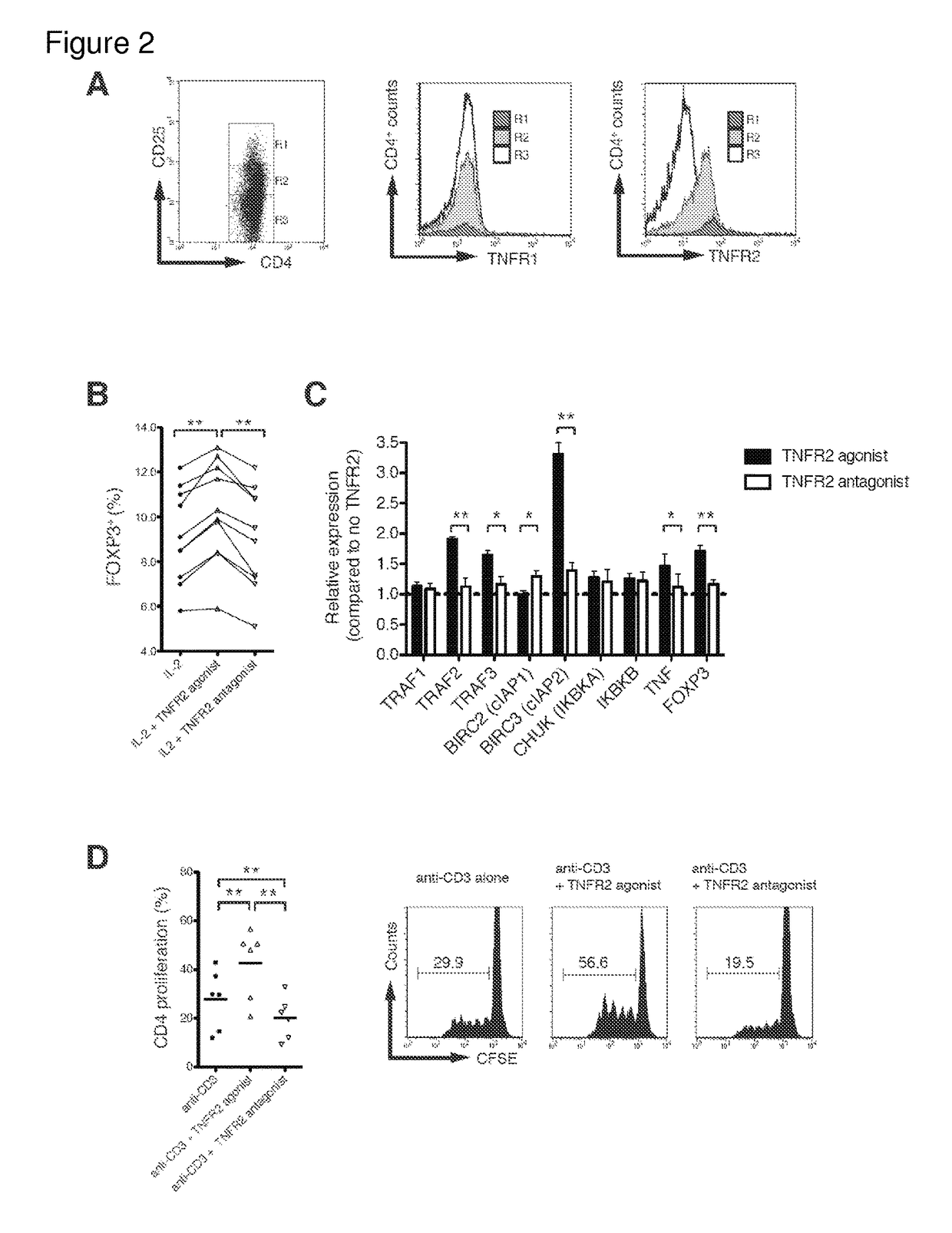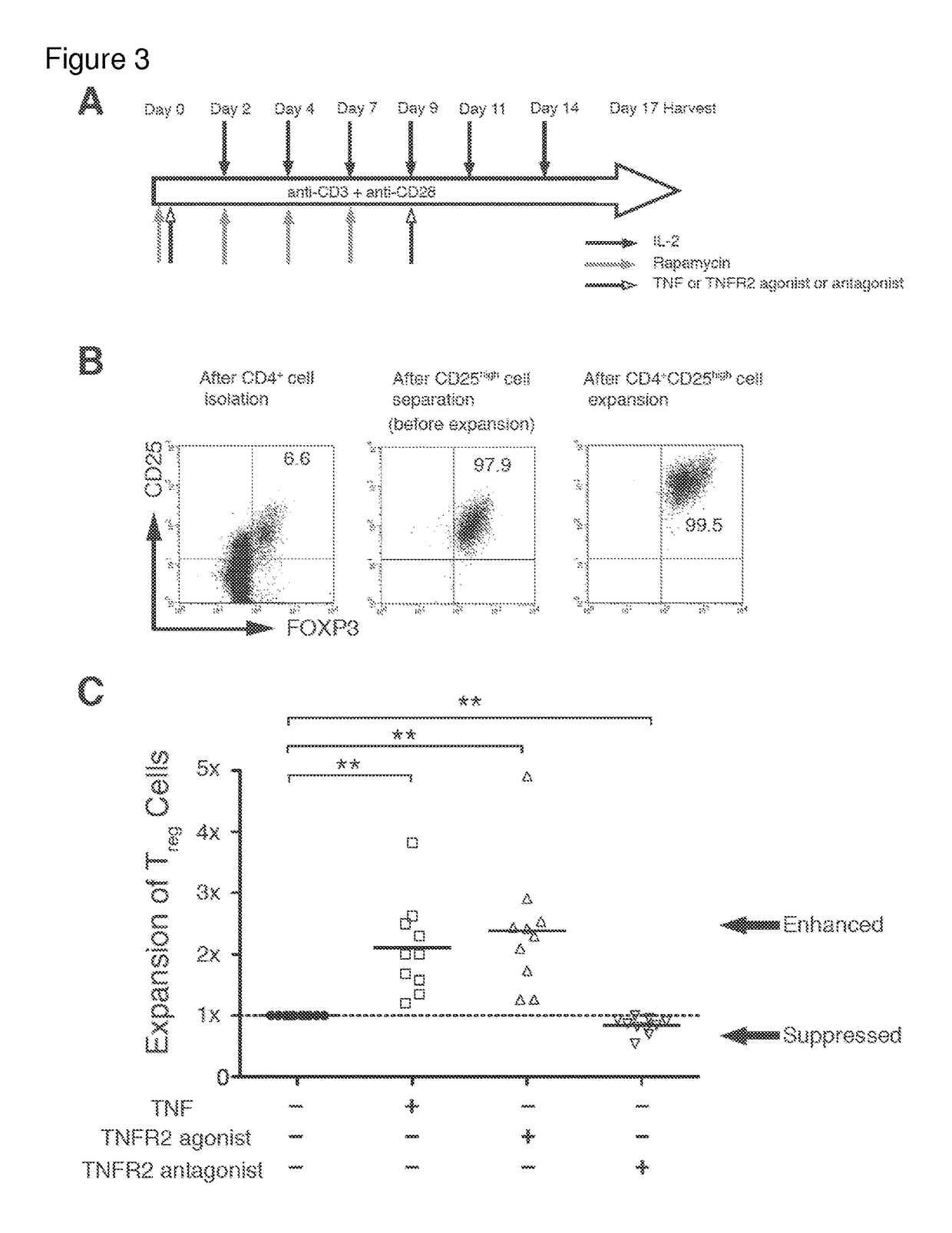Methods for expansion or depletion of T-regulatory cells
a technology of t-regulatory cells and t-regulatory cells, which is applied in the field of methods for expanding or depleting t-regulatory cells, can solve the problems of challenging clinical application of t-regulatory cells
- Summary
- Abstract
- Description
- Claims
- Application Information
AI Technical Summary
Benefits of technology
Problems solved by technology
Method used
Image
Examples
example 1
Trial Induction of Human Tregs
[0142]Unexpanded, naturally occurring human Tregs are heterogeneous and rare in blood. Homogeneous populations of Tregs are difficult to expand in vitro even with multiple ligand mixtures. With the goal of expanding sufficient numbers of homogeneous populations of human Treg cells TNF-α, I first sought to confirm or refute an increase in Treg concentrations by induction with native TNF-α. Because an FDA-approved version of TNF-α does not exist and manufacturing of a stable form is difficult, I administered a well-known, strong inducer of TNF-α, Bacillus Calmette Guerin (BCG), a generic vaccine already on the market for decades for tuberculosis and bladder cancer. This method of inducing endogenous TNF-α eliminated the manufacturing problems of TNF-α that forms unnatural monomers, dimers and trimers with differential cellular effects.
[0143]The small, double-blinded placebo-controlled clinical trial enrolled two subjects. One human subject received BCG in...
example 2
l Effects of TNFR Monoclonal Antibodies and Signaling Pathways
[0144]I cultured freshly isolated human CD4+ cells from 14 human subjects only with TNF-α for 16 hours (FIG. 1B). While finding no induction of Tregs, assessed by inducible FOXP3, I observed a significant increase in Tregs after adding IL-2. Co-incubation of TNF-α and IL-2 produced a significant increase in Tregs over IL-2 alone (FIG. 1B). IL-2 is important for Tregs induction and maintenance in mice. Findings were confirmed by flow cytometry, in which co-incubation increased the percentage of CD4+CD25hi FOXP3 cells in human cultured cells from blood (FIG. 1C). Thus, the data in FIGS. 1B and 1C confirm that TNF-α can induce a homogeneous population of Tregs in vitro.
[0145]In freshly isolated CD4+ cells, I examined expression levels of each TNFR in relation to CD25+ expression. TNFR1 expression on CD4+ cells, regardless of CD25+ expression levels, was unchanged using flow cytometry (FIG. 2A, middle panel), whereas TNFR2 pr...
example 3
nist Expansion and Homogeneity of Tregs
[0151]I next investigated whether in vitro Tregs, treated by TNFR2 agonist, possessed more homogeneous Treg cell surface markers than those treated by the antagonist. Comparing phenotypes for 14 cell surface markers, all treatment groups highly expressed Treg signature markers FOXP3 and CD25 (FIG. 4A). The expression levels of FOXP3 were similar to levels before treatment. However, CD25+ expression was much higher after agonist treatment, which can be considered an expansion effect rather than an antagonist effect (data not shown). Nearly 100% of expanded CD25hi Tregs in each group were positive for CTLA4, TNFR2, CD62L, Fas, and negative for CD127 (FIG. 4A). Tregs treated with TNFR2 antagonist also maintained expression for these markers. In contrast, several other surface markers, such as HLA-DR, ICOS, CD45RO and chemokine receptors, were differentially expressed between the agonist vs. antagonist treatment (FIGS. 4B and 4C and FIG. 10). Simil...
PUM
| Property | Measurement | Unit |
|---|---|---|
| equilibrium dissociation constant | aaaaa | aaaaa |
| equilibrium dissociation constant | aaaaa | aaaaa |
| equilibrium dissociation constant | aaaaa | aaaaa |
Abstract
Description
Claims
Application Information
 Login to View More
Login to View More - R&D
- Intellectual Property
- Life Sciences
- Materials
- Tech Scout
- Unparalleled Data Quality
- Higher Quality Content
- 60% Fewer Hallucinations
Browse by: Latest US Patents, China's latest patents, Technical Efficacy Thesaurus, Application Domain, Technology Topic, Popular Technical Reports.
© 2025 PatSnap. All rights reserved.Legal|Privacy policy|Modern Slavery Act Transparency Statement|Sitemap|About US| Contact US: help@patsnap.com



